The ASRock X399 Phantom Gaming 6 Motherboard Review: $250 Sixteen Core Stunner
by Gavin Bonshor on March 12, 2019 10:00 AM EST- Posted in
- Motherboards
- AMD
- ASRock
- ATX
- ThreadRipper
- X399
- TR4
- 2950X
- 2.5G
- Phantom Gaming 6
Visual Inspection
The ASRock X399 Phantom Gaming 6 motherboard represents one of two gaming branded models from its Threadripper product stack, the other being the ASRock Fatal1ty X399 Professional Gaming. The ASRock X399 Phantom Gaming 6 ($250) sets its sights on the cheaper end of the Threadripper market, and sets its sights on the 16-core Threadripper processors segment at a more affordable price point.
On the design of the X399 Phantom Gaming 6, the overall theme centres around black aluminium heatsinks and a matte black PCB with red and silver accents on the bottom half of the board. The chipset heatsink follows the same accentuation and adds a Phantom Gaming logo on the silver section. Underneath the chipset heatsink is RGB LED lighting which can be controlled via the ASRock Polychrome RGB software or via the BIOS. Users have the option to add their own RGB LED strips with support for two regular RGB 12V headers and a single addressable RGB header; there is support for Razer Chroma products which can be accessed via the software.
Focusing on the top half of the motherboard, there are two 8-pin 12 V ATX inputs designed to provide the CPU with the required power from the PSU. Flanking either side of the Threadripper TR4 socket is a total of eight memory slots; four on either side. Threadripper processors have support for quad-channel memory and this board specifically supports up to 128 GB of DDR4-3400. Cooling support stretches around the board's edge with a total of five 4-pin headers present. These are divided into three sections; one for the CPU fan, one for a water pump/AIO and three for chassis fans.
On the power side, the ASRock X399 Phantom Gaming 6 uses a 6+2 configuration with two individual AMD SVI2 PWM controllers. This includes an Intersil ISL69147 PWM controller handling the 6-phase CPU Vcore and an ISL69144 4-phase PWM controller taking care of the 2-phase SoC section. ASRock’s MOSFET of choice is the Intersil ISL99227 power stages rated at 60 A and feature direct metal contacts which make up all the boards eight phases; no doublers in sight on this model. Making up the rest of the power delivery is eight 60 A inductors with one assigned to each power stage and is using Nichion Black 12K capacitors throughout.
| X399 Motherboard CPU Power Delivery (Gavin's Reviews) |
|||||
| Motherboard | Controller | H-Side | L-Side | Chokes | Doubler |
| ASRock X399 Phantom Gaming 6 | ISL69147 6+0 |
6 | 6 | 6 | - |
| ASUS X399 ROG Zenith Extreme |
ASP1405 8+0 |
8 | 8 | 8 |
- |
| MSI MEG X399 Creation | IR35201 8+0 | 16 | 16 | 16 | 8 x IR3599 |
Providing power to the CPU is two 8-pin 12 V ATX CPU power inputs and the X399 Phantom Gaming 6 has support for Threadripper processors up to 180 W TDP. For a chip such as the Threadripper 2950X, the power delivery is very capable for all but the most extreme of overclockers and enthusiasts, users and gamers will find a power setup like this good enough for the boards price point.
ASRock has implemented three full-length PCIe 3.0 x16 slots which operate all with full bandwidth. Each slot is protected with ASRock Steel Armor and ASRock hasn’t included any PCIe 3.0 x1 slots. The ASRock X399 Phantom Gaming includes three M.2 slots all capable of supporting NVMe SSDs, with the third slot supporting both PCIe 3.0 x4 and SATA drives. On the top slot, up to M.2 22110 drives can be installed while the other two slots located level with each other support up to M.2 2280 drives. At the bottom right-hand corner of the board is eight SATA slots with support for RAID 0, 1 and 10 arrays.
| ASRock X399 Phantom Gaming 6 CPU PCIe Layout | |||
| Number of Installed PCIe Cards on CPU |
PCIe_2 | PCIe_4 | PCIe_5 |
| x1 | x16 | - | - |
| x2 | x16 | x16 | - |
| x3 | x16 | x16 | x16 |
Located at the bottom of the right-hand side of the board is the audio section with a Realtek ALC1220 HD audio codec which is completed with five Japanese Nippon Chemi-Con gold audio capacitors. The audio is separated from the rest of the PCB and includes a front panel audio header with a right-angled connector; the ALC1220 codec doesn’t include an EMI shield. ASRock has also included a Texas Instruments NE5532 header amplifier to bolster the quality of the front panel audio.
Just to the right of the audio PCB is a variety of headers with one of the RGB 12 V headers and a single addressable RGB 5 V header; the second RGB 12 V header is located at the top right of the board. Also present is a TPM header, two chassis fan headers, two USB 2.0 headers allowing for four ports, one of the two USB 3.1 G1 headers, a clear CMOS button, a reset and power button, as well as front panel connectors for power switches.
Touching on more of the USB connectivity, the rear panel has just two USB 3.1 G2 ports consisting of a single Type-A and Type-C, with a further eight USB 3.1 G1 Type-A ports. The X399 Phantom Gaming 6 has the capability to host up to eighteen USB ports when the two USB 3.1 G1 and two USB 2.0 (two ports each) headers are factored in coupled with the rear panel ports. Also located on the rear panel is dual RJ-45 LAN consisting of a Realtek Dragon RTL8125AG 2.5 GbE Gaming NIC and an Intel I211-AT 1 GbE controller; the I211-AT has support for PXE. The Realtek ALC1220 audio codec offers five 3.5 mm color coded audio jacks and S/PDIF optical output, as well as a legacy PS/2 keyboard and mouse combo port.
What's in The Box
The ASRock X399 Phantom Gaming 6 comes supplied with a basic, yet handy bundle with a quick installation guide, software CD, rear panel IO shield four SATA cables, a two-way SLI HB bridge and four M.2 screws. Also featured is a Wi-Fi bracket for users adding their own Key E M.2 2230 Wi-Fi modules.
- User manual and quick installation guide
- Software setup guide
- Software installation CD
- Four SATA cables (two right-angled, two straight-angled)
- Two-Way SLI HB bridge
- Four M.2 screws
- Rear panel Wi-Fi bracket (M.2 Key E module sold separately)



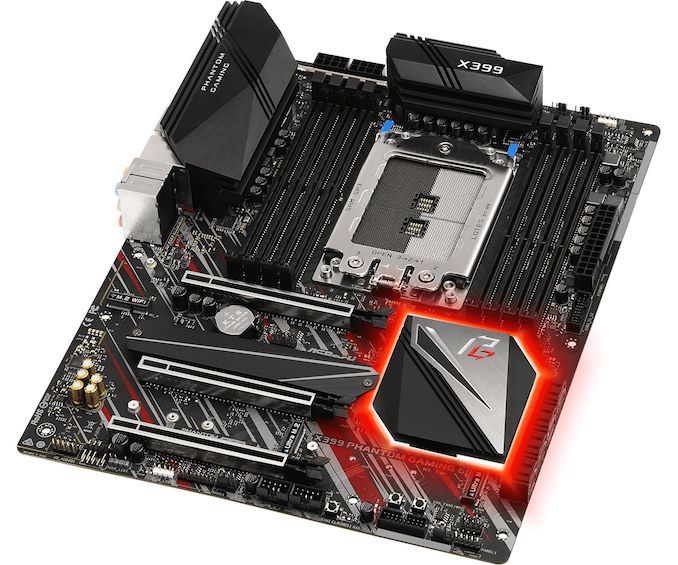
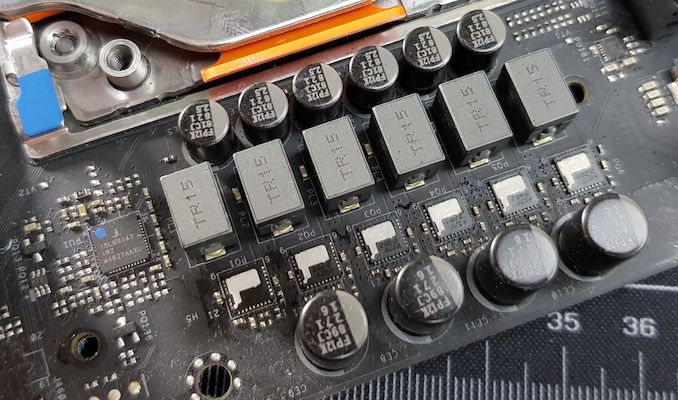
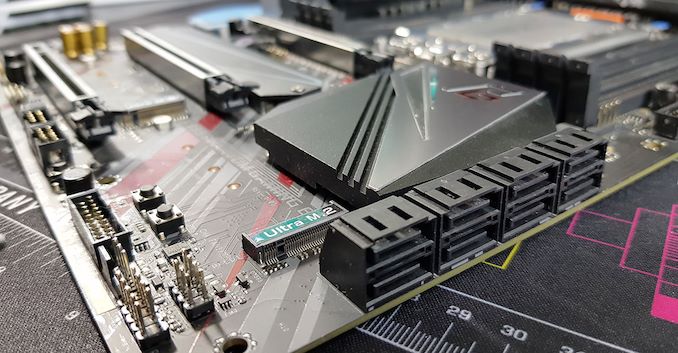
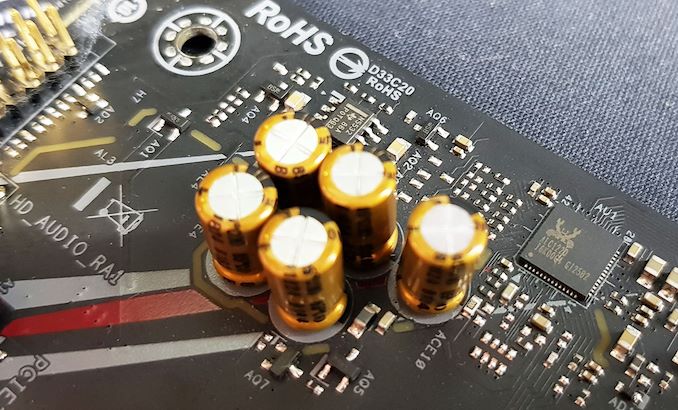


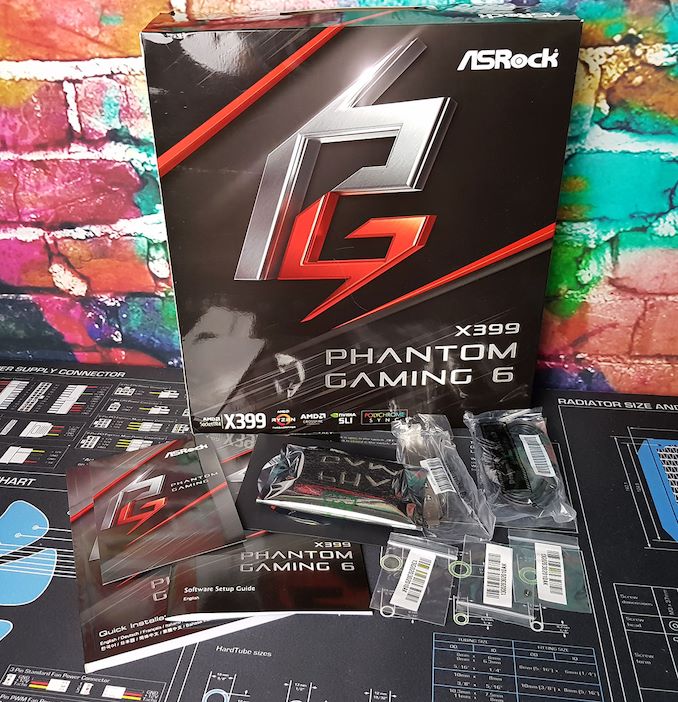








22 Comments
View All Comments
andychow - Tuesday, March 12, 2019 - link
These days, pcbs come with anywhere from 1 to 14 layers. I'm assuming that this means the audio circuits are isolated on their own layers.sonny73n - Tuesday, March 12, 2019 - link
Then it should be stated as "The audio PCB is on its own layer”. But I’ll have to break it down to see it for myself.Alexvrb - Tuesday, March 12, 2019 - link
"ASRock has built this motherboard to support AMD Threadripper with a thermal design point of up to 180 W, which means it can only support up to 16 core processors such as the AMD Threadripper 2950X."Zen 2 will pack more cores in that same envelope. I find it highly likely even an entry-level TR4 board like this will support more cores when the next-gen models hit the market - after a BIOS update, of course.
Smell This - Tuesday, March 12, 2019 - link
El-Oh-El @ 'post latency'Want some whine with that cheese, much?
sorten - Tuesday, March 12, 2019 - link
Weird product offering, considering Threadripper isn't a gaming CPU.TrackSmart - Wednesday, March 13, 2019 - link
Agreed regarding Threadripper and gaming-centric builds. It doesn't make a lot of sense.Of course, to look at the marketing used on computer components, one would clearly come to the conclusion that *almost all* powerful computers are primarily designed for gaming!
Now, please explain to the finance department why we appear to be purchasing "gaming" equipment for our high-end workstations...
xray9 - Wednesday, March 13, 2019 - link
I am wondering why thunderbolt is still not available with AMD boards. AFAIR Intel ceased license fees for this technology. Even for Intel boards this option is rare, especially if you want to build a Xeon based system to get ECC RAM as well. Do you know why this is the case ?AMD would be interesting as platform supporting ECC RAM compared to Intel Xeon, because the AMD CPU offering look good and are cheaper compared to Xeon.
One proposal for mainboard reviews. Could you kindly perform DPC latency measuring with LatencyMon in your reviews ? One time with default BIOS settings and one time with energy saving disabled ?
It would be very useful for people to identify good designed mainboards to achieve a very responsive systems for i.e. recording or gaming.
I had for example in the past a bogus mainboard where kernel timer latency was relatively high which caused audio drops. The only way was to use higher ASIO buffer sizes for recording, which is in some situations not so ideal.
I replaced the mainboard with the successor of this board on the same system.
And of all sudden the kernel timer latency went down to the absolute minimum of ~2 microseconds on an IDLE system, which was never possible with the other mainboard.
On some Laptop Reviews I saw in the past that they deliver these figures, which I regard as very useful. The lower kernel latency is, the quicker CPU cores are available for working on processes and threads without lag.
Valantar - Wednesday, March 13, 2019 - link
I wish this board was around back when I built my partner's TR workstation in late 2017. We went for the Asus X399-E Strix, and frankly I think I would have preferred this. More m.2 (the Strix has one + one on a kinda awkward bracket), standard ATX size, and very noticeably cheaper. The BYO WiFi solution is good IMO - m.2 WiFi cards are dirt cheap, you can pick whatever rocks your boat, or leave it if you don't care. I just wish the WiFi bracket was instead integrated into the I/O plate - there's room in the middle there. Other than that: Good job ASRock.Valantar - Wednesday, March 13, 2019 - link
... and I entirely forgot to mention the 2.5Gbit Ethernet. That's a _huge_ plus (if only someone were to launch some cheap-ish 5p 2.5/5GbE switches!)guyr - Saturday, April 6, 2019 - link
I'm a software developer, and this board looks great for that application. I want cores, high clocks and fast storage; I specifically don't care about multiple GPUs, so the 4x16 configuration of most of the existing Threadripper motherboards was overkill. This board appears to have what I actually need, saving cost on features I don't: 8 DIMMs for plenty of memory, 3 M.2 for fast storage, and of course the Threadripper. 16 cores is fine for software development, though perhaps with Zen 3 we'll get 32 cores in the 180 watt envelop. Kudos to ASRock for diversifying the market.